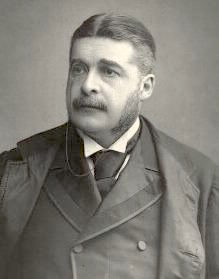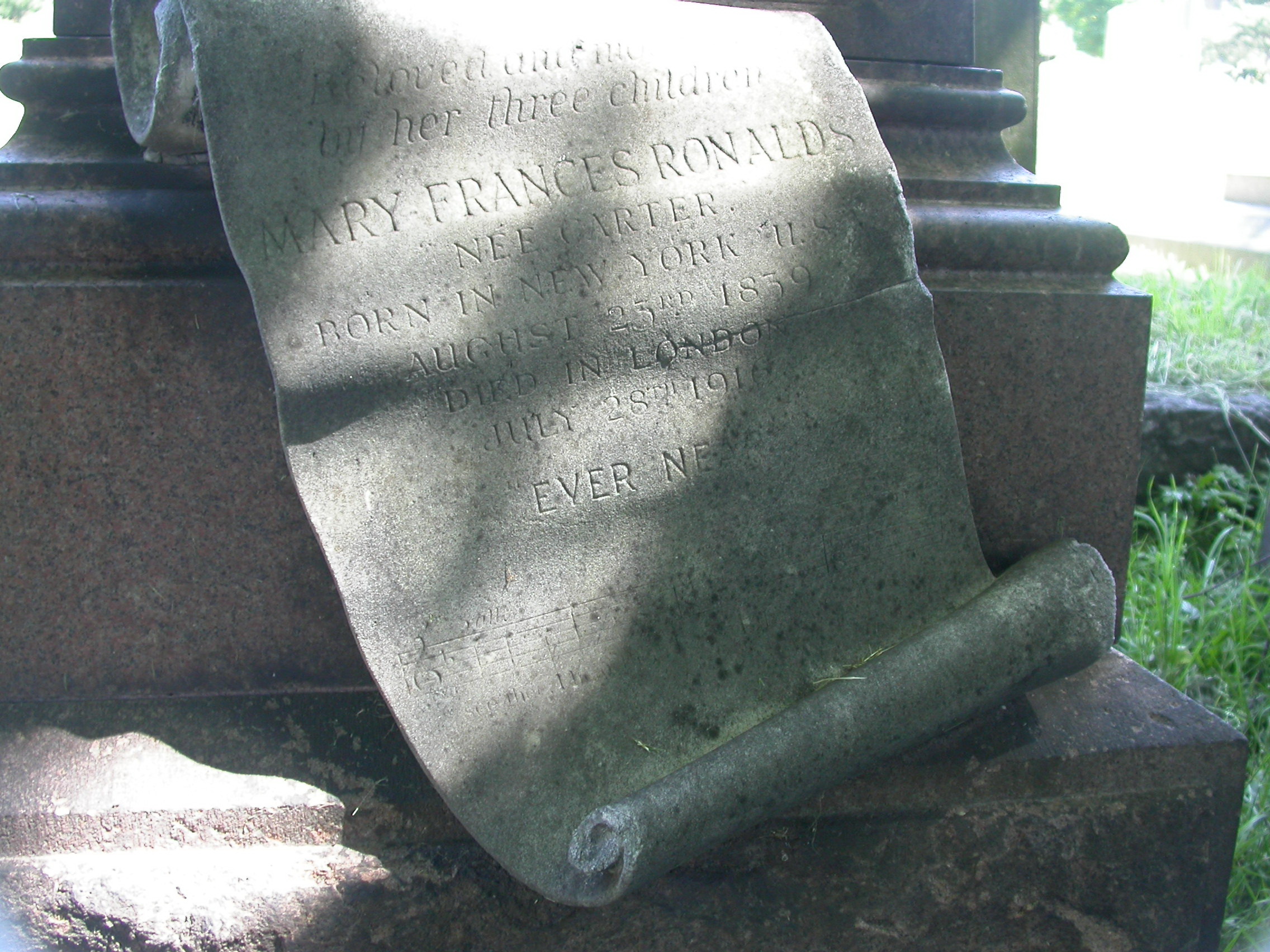|
Ellen Beach Yaw
Ellen Beach Yaw (September 14, 1869 – September 9, 1947) was an American Coloratura#Modern usage, coloratura soprano, best known for her concert career and extraordinary vocal range, and for originating the title role in Arthur Sullivan's comic opera ''The Rose of Persia'' (1899). After she undertook American and European concert tours in 1894 and 1895, Yaw was heard by Sullivan at a private concert in London and arranged for her to be cast as the lead in ''The Rose of Persia''. Yaw received mixed reviews in the role, and Helen Carte dismissed her after less than two weeks. After further vocal studies, Yaw made her grand opera debut as Ophelia in Ambroise Thomas's ''Hamlet (Thomas), Hamlet'' in Nice, France, in 1903 or 1904. She eventually performed about 18 leading opera roles. In 1908, she gave a single performance of the title role in ''Lucia di Lammermoor'' at the Metropolitan Opera House (39th Street), Metropolitan Opera House in New York, her only appearance there. Sh ... [...More Info...] [...Related Items...] OR: [Wikipedia] [Google] [Baidu] |
Ellen Beach Yaw (Overland Monthly 1895) 02
Ellen Beach Yaw (September 14, 1869 – September 9, 1947) was an American coloratura soprano, best known for her concert career and extraordinary vocal range, and for originating the title role in Arthur Sullivan's comic opera ''The Rose of Persia'' (1899). After she undertook American and European concert tours in 1894 and 1895, Yaw was heard by Sullivan at a private concert in London and arranged for her to be cast as the lead in ''The Rose of Persia''. Yaw received mixed reviews in the role, and Helen Carte dismissed her after less than two weeks. After further vocal studies, Yaw made her grand opera debut as Ophelia in Ambroise Thomas's ''Hamlet'' in Nice, France, in 1903 or 1904. She eventually performed about 18 leading opera roles. In 1908, she gave a single performance of the title role in ''Lucia di Lammermoor'' at the Metropolitan Opera House in New York, her only appearance there. She continued to perform on concert tours and at charitable benefits for the next s ... [...More Info...] [...Related Items...] OR: [Wikipedia] [Google] [Baidu] |
Perfect Fifth
In music theory, a perfect fifth is the Interval (music), musical interval corresponding to a pair of pitch (music), pitches with a frequency ratio of 3:2, or very nearly so. In classical music from Western culture, a fifth is the interval from the first to the last of the first five consecutive Musical note, notes in a diatonic scale. The perfect fifth (often abbreviated P5) spans seven semitones, while the Tritone, diminished fifth spans six and the augmented fifth spans eight semitones. For example, the interval from C to G is a perfect fifth, as the note G lies seven semitones above C. The perfect fifth may be derived from the Harmonic series (music), harmonic series as the interval between the second and third harmonics. In a diatonic scale, the dominant (music), dominant note is a perfect fifth above the tonic (music), tonic note. The perfect fifth is more consonance and dissonance, consonant, or stable, than any other interval except the unison and the octave. It occu ... [...More Info...] [...Related Items...] OR: [Wikipedia] [Google] [Baidu] |
Isabel Jay
Isabel Emily Jay (17 October 1879 – 26 February 1927) was an English opera singer and actress, best known for her performances in soprano roles of the Savoy Operas with the D'Oyly Carte Opera Company and in Edwardian musical comedy, Edwardian musical comedies. During Jay's career, picture postcards were immensely popular, and Jay was photographed for over 400 different postcards. After studying at the Royal Academy of Music, Jay joined the D'Oyly Carte Opera Company in 1897, with whom she began singing principal roles immediately, becoming the company's leading soprano in 1899, where she played leading roles in comic operas including ''The Rose of Persia, The Pirates of Penzance, Patience (opera), Patience, The Emerald Isle'' and ''Iolanthe''. She married and left the company in 1902. She returned to the West End theatre, West End stage in 1903 and starred in eleven musicals over the ensuing years, including ''A Country Girl, The Cingalee, Véronique (operetta), Véronique, T ... [...More Info...] [...Related Items...] OR: [Wikipedia] [Google] [Baidu] |
Cadenza
In music, a cadenza, (from , meaning cadence; plural, ''cadenze'' ) is, generically, an improvised or written-out ornamental passage played or sung by a soloist(s), usually in a "free" rhythmic style, and often allowing virtuosic display. During this time the accompaniment will rest, or sustain a note or chord. Thus an improvised cadenza is indicated in written notation by a fermata in all parts. A cadenza will usually occur over either the final or penultimate note in a piece, the lead-in (), or the final or penultimate note in an important subsection of a piece. A cadenza can also be found before a final coda or ritornello. Origin Initially, cadenzas were more simple and structured - a performer would add small embellishments such as trills to the end of cadences. These small embellishments of the early cadenza did not affect meter. However, as the improvised embellishments continued, they became longer and more thought out. This made way for the 'composed' cade ... [...More Info...] [...Related Items...] OR: [Wikipedia] [Google] [Baidu] |
Savoy Theatre
The Savoy Theatre is a West End theatre in the Strand in the City of Westminster, London, England. The theatre was designed by C. J. Phipps for Richard D'Oyly Carte and opened on 10 October 1881 on a site previously occupied by the Savoy Palace. Its intended purpose was to showcase the popular series of comic operas of Gilbert and Sullivan, which became known as the Savoy operas. The theatre was the first public building in the world to be lit entirely by electricity. For many years, the Savoy Theatre was the home of the D'Oyly Carte Opera Company, which continued to be run by the Carte family for over a century. Richard's son Rupert D'Oyly Carte rebuilt and modernised the theatre in 1929, and it was rebuilt again in 1993 following a fire. It is a Grade II* listed building. In addition to '' The Mikado'' and other famous Gilbert and Sullivan premières, the theatre has hosted such premières as the first public performance in England of Oscar Wilde's '' Salome'' (1931) ... [...More Info...] [...Related Items...] OR: [Wikipedia] [Google] [Baidu] |
Sir Arthur Sullivan
Sir Arthur Seymour Sullivan (13 May 1842 – 22 November 1900) was an English composer. He is best known for 14 operatic collaborations with the dramatist W. S. Gilbert, including ''H.M.S. Pinafore'', ''The Pirates of Penzance'' and ''The Mikado''. His works include 24 operas, 11 major orchestral works, ten choral works and oratorios, two ballets, incidental music to several plays, and numerous church pieces, songs, and piano and chamber pieces. His hymns and songs include "Onward, Christian Soldiers" and "The Lost Chord". The son of a military bandmaster, Sullivan composed his first anthem at the age of eight and was later a soloist in the boys' choir of the Chapel Royal. In 1856, at 14, he was awarded the first Mendelssohn Scholarship by the Royal Academy of Music, which allowed him to study at the academy and then at the Felix Mendelssohn College of Music and Theatre, Leipzig Conservatoire in Germany. His graduation piece, incidental music to William Shakespe ... [...More Info...] [...Related Items...] OR: [Wikipedia] [Google] [Baidu] |
Fanny Ronalds
Mary Frances Ronalds RRC DStJ (née Carter; August 23, 1839 – July 28, 1916) was an American socialite and amateur singer who is best known for her long affair with the composer Arthur Sullivan in London in the last decades of the nineteenth century and for her musical salons. After separating from her husband, Ronalds moved with her children from New York to Paris in 1867, then to Tunis in 1869, and eventually to London in 1875. She was accepted into royal social circles and was a popular hostess. A noted beauty, she became romantically involved with Arthur Sullivan during the 1870s and continued as his companion until his death in 1900. She was much admired as a singer and became famously associated with one of Sullivan's most popular songs, "The Lost Chord". Early life Ronalds, generally called "Fanny", was born in Boston, Massachusetts, the daughter of Joseph Ballard Carter (1813–1889) and his wife,Ainger, p. 129 Mary (née Chamberlain) Carter (died 1898). In 1859 at ... [...More Info...] [...Related Items...] OR: [Wikipedia] [Google] [Baidu] |
Ellen Beach Yaw
Ellen Beach Yaw (September 14, 1869 – September 9, 1947) was an American Coloratura#Modern usage, coloratura soprano, best known for her concert career and extraordinary vocal range, and for originating the title role in Arthur Sullivan's comic opera ''The Rose of Persia'' (1899). After she undertook American and European concert tours in 1894 and 1895, Yaw was heard by Sullivan at a private concert in London and arranged for her to be cast as the lead in ''The Rose of Persia''. Yaw received mixed reviews in the role, and Helen Carte dismissed her after less than two weeks. After further vocal studies, Yaw made her grand opera debut as Ophelia in Ambroise Thomas's ''Hamlet (Thomas), Hamlet'' in Nice, France, in 1903 or 1904. She eventually performed about 18 leading opera roles. In 1908, she gave a single performance of the title role in ''Lucia di Lammermoor'' at the Metropolitan Opera House (39th Street), Metropolitan Opera House in New York, her only appearance there. Sh ... [...More Info...] [...Related Items...] OR: [Wikipedia] [Google] [Baidu] |
The New York Times
''The New York Times'' (''NYT'') is an American daily newspaper based in New York City. ''The New York Times'' covers domestic, national, and international news, and publishes opinion pieces, investigative reports, and reviews. As one of the longest-running newspapers in the United States, the ''Times'' serves as one of the country's Newspaper of record, newspapers of record. , ''The New York Times'' had 9.13 million total and 8.83 million online subscribers, both by significant margins the List of newspapers in the United States, highest numbers for any newspaper in the United States; the total also included 296,330 print subscribers, making the ''Times'' the second-largest newspaper by print circulation in the United States, following ''The Wall Street Journal'', also based in New York City. ''The New York Times'' is published by the New York Times Company; since 1896, the company has been chaired by the Ochs-Sulzberger family, whose current chairman and the paper's publ ... [...More Info...] [...Related Items...] OR: [Wikipedia] [Google] [Baidu] |
Lucrezia Aguiari
Lucrezia Aguiari (sometimes spelled Agujari) (1743/46 in Ferrara – 18 May 1783 in Parma) was an Italian coloratura soprano. She possessed an unusually agile voice with a large vocal range that spanned slightly more than three and a half octaves; faculties that enabled her to perform the most difficult passage work. In a letter dated 24 March 1770 Leopold Mozart wrote of hearing her perform a C an octave above high C at the Ducal opera of Parma, "I could not believe that she was able to reach C soprano acuto, but my ears convinced me."Kathleen Kuzmick Hansell. "Aguiari [Agujari], Lucrezia ['La Bastardina', 'La Bastardella']", ''Grove Dictionary of Music and Musicians'' Aldous Huxley also mentioned this event in his novel ''Brave New World'', (misspelt as 'Ajugari'). Biography Born in Ferrara, during her lifetime Aguiari was often referred to as "La Bastardina" or "La Bastardella". There are several different traditions explaining the origin of this nickname, one being that she was ... [...More Info...] [...Related Items...] OR: [Wikipedia] [Google] [Baidu] |
Adelina Patti
Adelina Patti (19 February 184327 September 1919) was a Spanish-Italian opera singer. At the height of her career, she was earning huge fees performing in the music capitals of Europe and America. She first sang in public as a child in 1851, and gave her last performance before an audience in 1914. Along with her near contemporaries Jenny Lind and Christina Nilsson, Patti remains one of the most famous sopranos in history, owing to the purity and beauty of her lyrical voice and the unmatched quality of her ''bel canto'' technique. The composer Giuseppe Verdi, writing in 1877, described her as being perhaps the finest singer who had ever lived and a "stupendous artist". Verdi's admiration for Patti's talent was shared by numerous music critics and social commentators of her era. Biography She was born Adela Juana Maria Patti, in Madrid, the youngest child of tenor Salvatore Patti (1800–1869) and soprano Caterina Barilli (died 1870). Her Italian parents were working in Spai ... [...More Info...] [...Related Items...] OR: [Wikipedia] [Google] [Baidu] |




